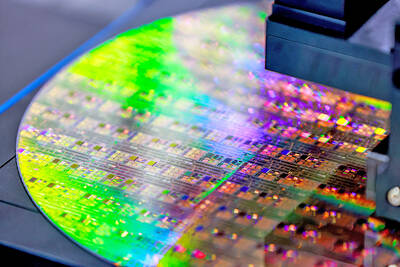The US economy might be faltering, but the oil industry is riding a "black gold" boom as gushing oil wells swell the corporate coffers of ExxonMobil, Chevron and ConocoPhillips by billions of dollars.
Corporate America is used to vast profits, but the oil industry's earnings dwarf all other industries, including banking, technology, and food and drink.
The US' largest energy group, and the world's biggest company, ExxonMobil Corp, posted record third-quarter net profit of US$10.49 billion, or around US$114 million a day, on Thursday. Its earnings soared by 26 percent over the same period a year ago, largely as a result of searing-hot crude oil prices which hit records over US$78 in July and August, although they have since fallen to around US$61 per barrel.
Put in perspective, ExxonMobil's quarterly profits at over US$10 billion were bigger than the latest quarterly profits of banking titan Citigroup (US$5.5 billion), Internet search colossus Google (US$773 million) and beverage giant Coca-Cola (US$1.5 billion) combined.
Wall Street and industry analysts have cheered such astronomical earnings, but Democratic lawmakers, including senators Hillary Clinton and John Kerry, renewed calls this week for an end to oil industry tax breaks.
Industry executives, meanwhile, have been careful not to overcelebrate their companies' high returns and kept their comments to shareholders tempered.
"Higher crude oil and natural gas realizations, and improved marketing and chemical margins, were partly offset by lower refining margins," ExxonMobil chairman Rex Tillerson said of the Texas energy firm's results.
Chevron's Dave O'Reilly said Friday, as the California-based group posted bulging quarterly net profit of US$5 billion, that the company's refineries had worked more efficiently.
"Downstream profits increased to US$1.4 billion in the third quarter, driven by higher utilization of our US refineries and improved refined-product margins in most of our areas of operation," O'Reilly said.
He spoke two days after rival ConocoPhillips announced a quarterly net profit of US$3.87 billion, and as the political heat mounts days ahead of the Nov. 7 US congressional elections, with the Democrats vying to retake control of the legislature.
"Over US$10 billion in profits during this quarter alone are what Big Oil got in return for writing the energy bill, reaping billions in taxpayer-funded giveaways, winning commercial access to federal lands and rolling back environmental initiatives," Kerry thundered in a statement.
"Is it any wonder, then, that Exxon has contributed 89 percent of their campaign contributions to Republicans?" Kerry said.
Oil executives bristle at suggestions of unfettered profits, saying their profit margins are lower than those of other industries.
At congressional hearings into their operations, executives have said earnings are big because the industry is big and stressed that extracting oil from under the sea or the Arctic tundra is technical and very costly.
It costs tens of millions of dollars to build an oil rig, float it out into the Gulf of Mexico and keep it pumping oil around the clock, they say.

The US government on Wednesday sanctioned more than two dozen companies in China, Turkey and the United Arab Emirates, including offshoots of a US chip firm, accusing the businesses of providing illicit support to Iran’s military or proxies. The US Department of Commerce included two subsidiaries of US-based chip distributor Arrow Electronics Inc (艾睿電子) on its so-called entity list published on the federal register for facilitating purchases by Iran’s proxies of US tech. Arrow spokesman John Hourigan said that the subsidiaries have been operating in full compliance with US export control regulations and his company is discussing with the US Bureau of

Taiwan’s foreign exchange reserves hit a record high at the end of last month, surpassing the US$600 billion mark for the first time, the central bank said yesterday. Last month, the country’s foreign exchange reserves rose US$5.51 billion from a month earlier to reach US$602.94 billion due to an increase in returns from the central bank’s portfolio management, the movement of other foreign currencies in the portfolio against the US dollar and the bank’s efforts to smooth the volatility of the New Taiwan dollar. Department of Foreign Exchange Director-General Eugene Tsai (蔡炯民)said a rate cut cycle launched by the US Federal Reserve

Taiwan’s rapidly aging population is fueling a sharp increase in homes occupied solely by elderly people, a trend that is reshaping the nation’s housing market and social fabric, real-estate brokers said yesterday. About 850,000 residences were occupied by elderly people in the first quarter, including 655,000 that housed only one resident, the Ministry of the Interior said. The figures have nearly doubled from a decade earlier, Great Home Realty Co (大家房屋) said, as people aged 65 and older now make up 20.8 percent of the population. “The so-called silver tsunami represents more than just a demographic shift — it could fundamentally redefine the

Businesses across the global semiconductor supply chain are bracing themselves for disruptions from an escalating trade war, after China imposed curbs on rare earth mineral exports and the US responded with additional tariffs and restrictions on software sales to the Asian nation. China’s restrictions, the most targeted move yet to limit supplies of rare earth materials, represent the first major attempt by Beijing to exercise long-arm jurisdiction over foreign companies to target the semiconductor industry, threatening to stall the chips powering the artificial intelligence (AI) boom. They prompted US President Donald Trump on Friday to announce that he would impose an additional